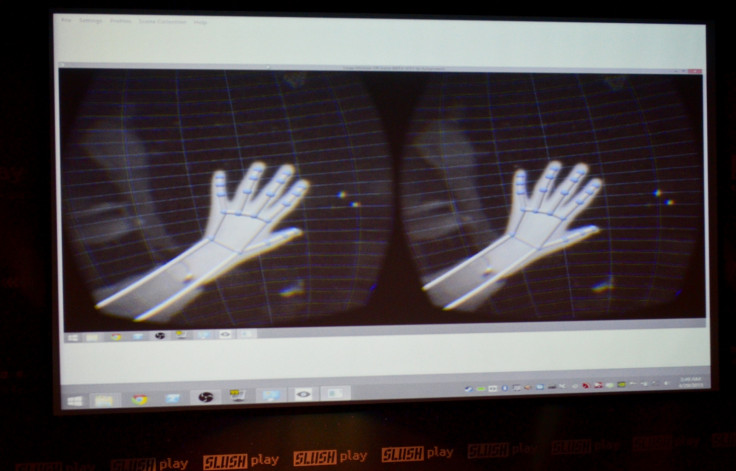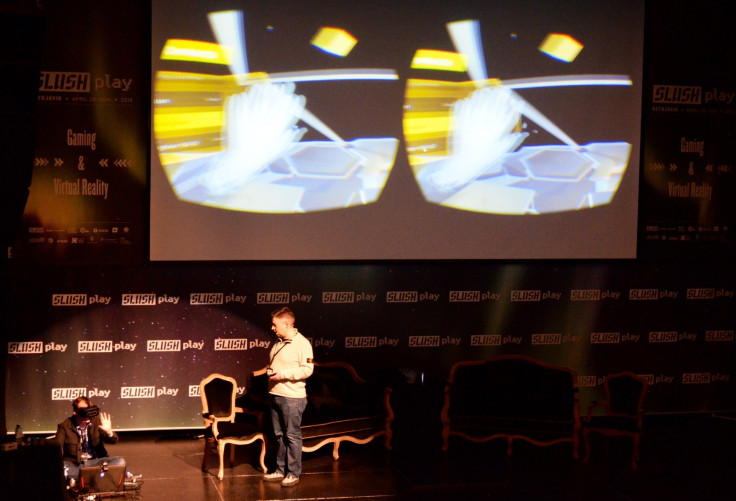Reach out and touch: Leap Motion sensor puts your arms and hands into virtual reality games

Major breakthroughs for virtual reality gaming in 2015 and 2016 will come from smartphones with 4K screens and sensors which can translate your hand movements into the game.
Speaking at Slush Play in Reykjavik, Iceland, Andrew Littlefield of Leap Motion said ultra-high resolution smartphone displays, like one recently showcased by Sharp, will pave the way for better quality VR games and experiences. Although 4K screens with more than 800 pixels per inch are pointless for writing an email or browsing Facebook, such dense phone screens will make VR a truly high-definition spectacle.
But bigger than improved resolutions, the real breakthrough for VR will come in the form of sensors like that from Leap Motion, which sit on the front of VR headsets and track the wearer's hand and arm movements. These are relayed into what they see almost instantly, with precision and no noticeable lag.
Littlefield said: "When they experience VR for the first time people immediately put their hands in front of them [which they cannot see]. The keyboard and mouse are great but they are secondary input devices. In VR you are in a 3D space and want an input method that can interact with that 3D space naturally."
A demonstration tried by IBTimes UK sees the wearer's arms and hands appear in front of them in real time, with the Leap Motion sensor blending what the VR headset is showing with what is actually in front of the wearer, such as nearby objects and their own hands. This means gamers can reach out to adjust virtual controls, such as toggles on the overhead panel of an aircraft cockpit, and see an accurate representation of their hands interacting with the buttons and levers.

Littlefield added: "Gamepads are still needed, but this system is for secondary controls. If you're holding a [physical] gun [controller] then it's difficult to find the button on it to open a door. With this, you can just reach out and open the door."
Called Dragonfly, Leap Motion's new sensor can record video at 225 frames per second and analyst movement at a huge 720fps, while offering almost zero latency. In other words, the gamer would see no noticeable delay between moving their hand and seeing that movement through the VR headset.
As well as completely fictitious VR experiences, the hardware can also be used with AR (augmented reality), where the wearer's real life environment is captured by a camera and blended with an interface created by the headset. Littlefield said it "isn't uncommon" for him to forget he is wearing the system while working in the office, and is known to pick up a drink and knock it into the headset.
Looking ahead and to the future of VR, Littlefield admits the technology "is going to remain a fairly hardcore and in-the-valley geek badge of honour. It's going to be a fairly geeky audience and that's important to think about when you're developing games and experiences. It means you don't need to create Flappy Bird in VR, it means you can focus on depth and gameplay...[although] I would love to be wrong on this, I would love consumers to jump on VR because I think it's an absolutely incredible experience."
© Copyright IBTimes 2025. All rights reserved.





















